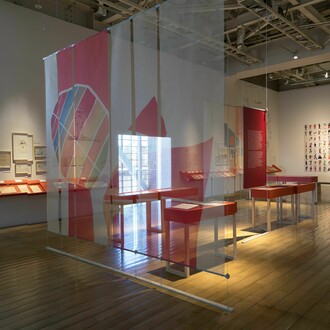Weaving in the Andes preceded ceramic making, agriculture and village life. As early as five thousand years ago, people began to use cotton and Andean camelid fiber to manufacture the first textiles, sometimes employing the same technique used to produce ancient plant fiber mats.The experience of weaving warp and weft threads into a single structure and the search for new decorative techniques led to the invention of the weaving loom, which accelerated the development of this craft notably.
The earliest loom-woven textiles of the southern Andean coast were made of plain weave cotton and then painted. These served as a medium for disseminating the religious iconography of the Chavín civilization as it expanded its cultural influence beyond the central sierra some three thousand years ago.The Parakas weavers inherited textile painting and a style of imagery from the Chavín artists while contributing new textile technologies, most notably embroidery.
The woven masks that crown their funerary bundles initially bore painted images, then later human faces embroidered with camelid hair. Polychrome embroidery rose to its peak near the end of the Parakas culture, applied to long sashes and turbans, as edgework on tunics and on the great blankets that were used for their superb funerary attire.
















